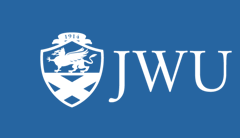To download dissertations and theses, please click on the appropriate "Download" button for your campus to log in and be e-verified. When you reach the "Sign into your JWU email" page, enter your JWU username and password.
Non-JWU users: Please talk to your librarian about requesting this dissertation through interlibrary loan.
Perceptions of northeastern United States Recreation Directors regarding the impact of recreation centers on students, the campus community, and institutional goals
Abstract
Recreation center growth on college campuses has garnered national attention. According to Reisberg (2001), today's students have grown accustomed to utilizing elaborate workout facilities and have begun to demand that their college or university of choice provide that space. Through investing money into recreation facilities, college and university leaders can improve students educationally, physically, socially, spiritually as well as enhance their overall satisfaction with their college experience (Astin, 1984; Kuh, 1995; Belch, Gebel, & Maas, 2001). Leaders in higher education need to include recreation centers as they think about overall campus community, student development, recruitment, and retention. The objective of this study was to analyze the Recreation Directors’ perceptions and beliefs regarding the impact on the students and the campus community of the construction of a new or renovation of a recreational facility on college and university campuses. Specifically, the study looked to answer the following questions: (1) What did Recreation Directors cite as the most important reasons to build a recreation facility? (2) According to the Recreation Directors, what were the conflicting university spending priorities, if any, at the institutions represented by the survey respondents? (3) According to the Recreation Directors, what effect did the recreation center have on the institutions represented by the survey respondents with respect to student increases in fitness and wellness; intramurals and recreation; and institutional satisfaction? (4) According to the Recreation Directors, what features of the recreation building were cited as important at the institutions represented by the survey respondents? (5) According to the Recreation Directors, what were the funding sources most often used to build the recreation centers? This study was a combined qualitative and quantitative research design where a survey was distributed to a convenience sample of Recreation Directors (N=29) attending the National Intramural Sport and Recreation Association (NIRSA) annual conference in Minneapolis, Minnesota; in particular the Recreation Directors from region one. The descriptive and qualitative data showed that intramurals and recreation was the most important goal for building a recreation facility. Recruitment and retention was the second most important goal for building a recreation facility. The study also showed that the recreation facility had increased students' both fitness and wellness and intramural and recreation participation. 79% of Recreation Directors responded that the most conflicting priorities when deciding to build a new recreational facility were academic buildings 48% and residence halls 46%. The results of this study may lead to future research on the examination of a recreation centers' ability to help increase recruitment and retention. The results of this study may also lead to future research on the impact, advantage, and effectiveness recreational facilities give institutions with respect to students’ emotional, social, psychological well being, educational outcomes and student development.
Subject Area
Educational leadership|Physical education|Higher education|Recreation
Recommended Citation
Andreozzi, Mark J, "Perceptions of northeastern United States Recreation Directors regarding the impact of recreation centers on students, the campus community, and institutional goals" (2010). Dissertation & Theses Collection. AAI3397420.
https://scholarsarchive.jwu.edu/dissertations/AAI3397420

